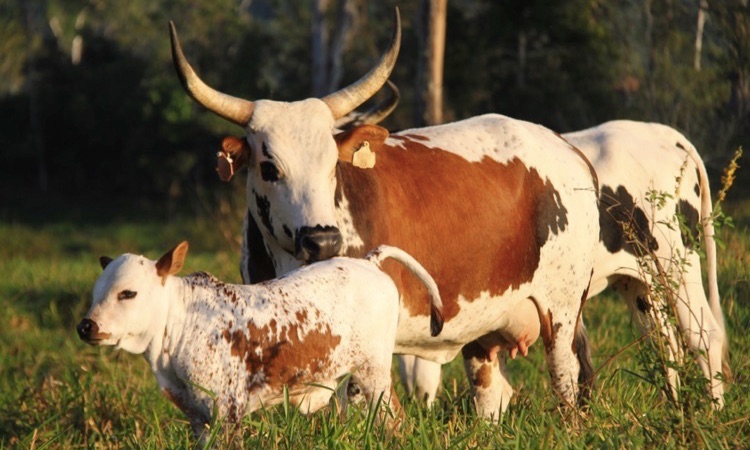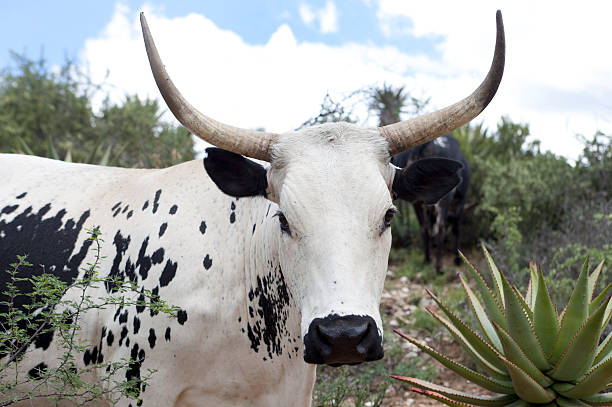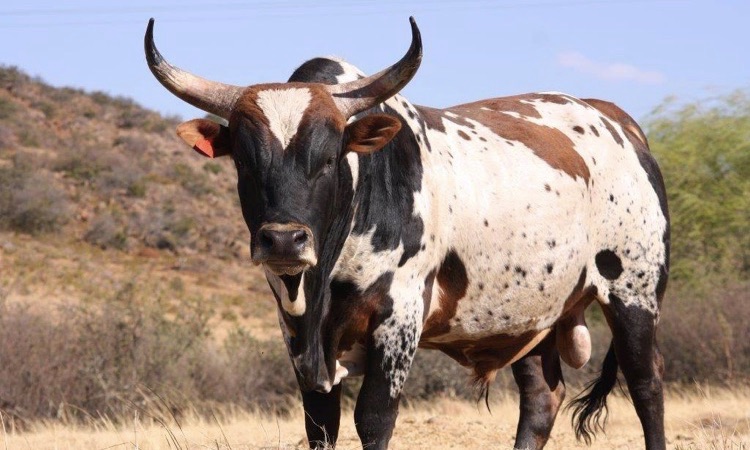Nguni cattle are a hybrid of Indian and European breeds that were introduced to Southern Africa by the pastoralist Nguni people during their migration from North Africa.
The cattle breed is of a medium size and meant to graze on the highveld. Read on to learn more about these amazing cows.

Nguni Cattle Quick Facts
- They are very hardy animals
- They reproduce with relative ease
- Parasite resistant
- They can tolerate extreme temperatures
- They offer a quality carcass with an even distribution of fat
- Long life span
- Adept at foraging
History
In 1932, the late Professor HH Curzon worked to produce Nguni cattle that were bred true-to-type. This eventually led to the formation of Bartlow Combine breeding station in the late 1940’s.
In 1950, the Bonsma report was published and it showed how Nguni cattle had adapted to their environment in South Africa. This was a significant milestone in recognizing the Nguni breed.
In 1985, the Nguni Cattle Breeders Society was accepted as a member of the South African Stud Book and Livestock Improvement Association.
Characteristics
Nguni cattle are popular for their ability to give birth frequently and resist diseases. They’re the preferred breed of livestock among the local Bantu-speaking people in southern Africa, including South Africa, Eswatini, Namibia, Zimbabwe, Botswana and Angola.
They have adapted to the African environment and displays many useful characteristics. It is slightly smaller than other breeds of beef cattle, but this allows it to live in the Highveld regions of Africa.
The Nguni cow’s sloping rump is a key feature that allows for easy calving. Additionally, the cow has a small to medium-sized udder with well-attached teats.
The horns of these animals and their hide patterns come in a variety of shapes and colors, making each one unique – one of the main reasons this breed is so distinctive.
The hide of the Nguni is sleek and glossy to prevent ticks from attaching themselves to the animal. The legs and hooves are strong, enabling the animal to walk and climb in search of enough grazing. The tail is thin and flexible, with a full brush that extends below the hock. The Nguni is known for its good temperament.

Habitat
They are able to withstand harsh conditions, both hot and cold. They are also versatile and durable, with a natural immunity to tick borne diseases.
Cows that mature early, are fertile, and have easy calving often live long and productive lives. In fact, cows will produce 10 or more calves in their lifetime. Cows also show great efficiency by weaning calves that weigh 45-50% of their body mass.
Nguni cattle are less prone to dystocia, this being ascribed to their sloping rumps, small uterus and low birth mass.
The Nguni can be fattened on natural grazing and performs well in the feedlot, producing quality carcasses with an even distribution of fat and excellent marbling, finished carcasses dress out at roughly 180-220 kg.
Bulls
Bulls are medium-sized animals that weigh approximately 500 to 600 kilograms. They display characteristics typical of males, including well-developed muscles and humps located in front of the forelegs. The scrotum is also well developed, allowing for proper pigmentation and thermoregulation.

Cows
Weighing between 300kg and 400kg, these cows are smaller than average and have sleek, delicate lines around the neck and forequarter. Their prominent wedge shape means that most of their weight is in the stomach and hindquarter area.
Calves
The average birth weight of calves is 22.5kg and wean at approximately 175kg, they grow at about 0.70 kg per day until weaning.



